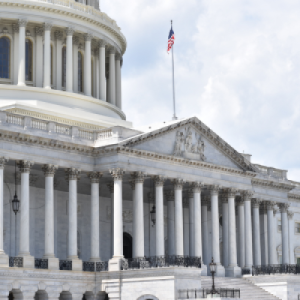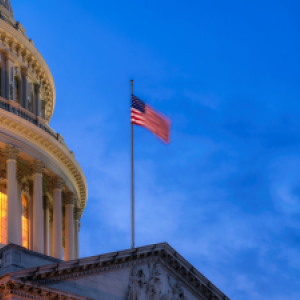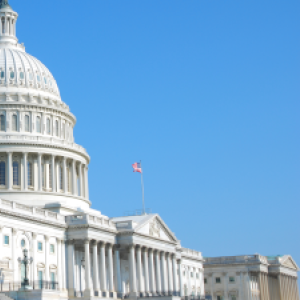The massive “One Big Beautiful Bill” (BBB) is now Federal law. Officially known as H.R. 1, a “budget reconciliation bill” in Congressional lingo, the impact of the BBB will be felt in the short and long term in many ways, both large and small. The BBB does provide some pro-business tax relief and contains other provisions that may prove beneficial. But, even though some of these provisions don’t take effect until after the Congressional midterm elections in 2026, whatever you think of the politics of the bill, the inescapable fact is that most of the effects on ambulance services nationally are likely to be negative.
This article focuses one some of the bigger-picture ambulance industry likely impacts the bill will have on how we operate, how we’re paid, and larger issues of ambulance service sustainability.
Potential Ambulance Industry Changes Under the BBB
Payer Mix Shift
One of the most impactful changes most ambulance services will experience from the BBB will be significant shifts in payer mix. Due to impending reductions in Medicaid spending and eligibility, as well as changes to the Affordable Care Act marketplace enrollment process, and the reduction of subsidies to purchase ACA marketplace plans, it is likely that both the Medicaid and commercial insurance portions of your payer mix will go down. Of course, it all still must equal 100%, so those Medicaid and commercially insured patients losing their coverage must end up in some other part of your payer mix. Unfortunately, however, that will likely be in the self-pay bucket. By some estimates, upwards of 10 million more people will become uninsured under the provisions of the BBB.
With a likely increase in self-pay patients, and a further tightening of state consumer protection laws, such as laws restricting collections and credit reporting, laws limiting balance billing and statutory limitations on what you can charge uninsured and self-pay patients (be sure to check your own state law), ambulance services will face headwinds in their revenue cycle.
Reduced Primary Care – More Ambulance and ED Utilization
If history and experience are any guide, the likely increase in the uninsured/self-pay populations will lead to more individuals using the 911 system, and hospital emergency departments, as sources of primary care. This means that ambulance services can expect more 911 calls for chronic or low-acuity conditions, since the public surely knows that 911 calls almost always bring ambulance responses, and that emergency departments must provide care without regard to the patient’s ability to pay.
Of course, the potential increase in ED utilization as a source of primary care will not bode well for the ever-present challenges of ambulance patient offload delays and wall time.
More IFTs and Longer Transport Times
The potential impacts on smaller, rural and suburban hospitals are expected to be particularly pronounced under the BBB. Around the country, smaller hospitals have already begun to close or be sold, often resulting in a reduction of services in rural and suburban areas. It may be that specialty and tertiary care services will become more centralized in urban population centers, simply due to economies of scale in higher-volume facilities.
This means that ambulance services can expect an increased need for interfacility and critical care transports as facilities in outlying areas are less able to cope with advanced healthcare needs of patients. And, because fewer facilities will be providing fewer services in outlying areas, ambulance services can expect longer transport times with increased distances to connect patients with these likely shrinking sources of definitive and specialty care.
Limitation on Medicaid Retroactive Eligibility
One reimbursement safety net that benefits ambulance services is the retroactive Medicaid eligibility period, which is currently 90 days. This allows coverage for individuals who receive pre-enrollment services, or for whom coverage is not in place on the date of service. The BBB rolls back these retroactive benefit coverage periods both for ACA expansion and non-expansion states. Retroactive coverage eligibility period will roll back from 90 days to 30 days in most states, which will be an added blow to your revenue cycle, by shifting more of these services to self-pay.
State-Directed Supplemental Payment Programs
Though much is yet to be known about the future of these programs until agency rulemaking occurs, it is likely that providers participating in GEMT and IGT programs for supplemental Medicaid reimbursement can expect substantial payment reductions.
What Can We Do?
The impacts of the BBB on ambulance services and most other healthcare providers, as we’ve laid out here, are primarily negative. Nevertheless, there are things every ambulance service can do to help manage these effects and reduce the negative impacts.
Improve payer discovery. Leverage your technology to utilize real-time insurance discovery status of your patients. In addition, we strongly suggest that EMS crews in the field ask patients about their insurance and copy insurance information directly from the patient’s card at the time of service whenever the patient condition allows. As technology has become more robust, fewer ambulance services emphasize gathering this information at the time of service, but ambulance services that emphasize this will likely have a leg up in their RCM.
Reengineer your NET and IFT call intake. “You call, we haul” can no longer be a recipe for success or economic sustainability. Ambulance services that perform non-emergency transports (NETs) and IFTs must improve their call intake and transport screening processes to identify those patients for whom medical necessity and other coverage criteria will likely not be met. This will allow your company to implement practices like advance payment, which is the next recommendation on our list.
Implement pre-transport payment practices. By identifying likely non-covered services prior to providing non-emergency transports, ambulance services can shift payment responsibility from after the time of service to before. When your NET call screening identifies likely non-covered services, you can either decline the service, or take payment in advance, since you are much less likely to be paid after the fact. Incorporate multiple payment methods into your NET call intake process, including credit cards, PayPal, Venmo, etc. Not only would this apply for non-medically necessary or non-covered services, but payment in advance can also be used for non-covered mileage, such as you would encounter if you are transporting a patient to a from a facility that was not the “closest appropriate.”
Implement evidence-based alternative modalities for low-acuity patients. Reducing non-medically necessary transport volume will not only help you avoid non-payment for services that don’t meet coverage criteria, it will also help you avoid the long offload times that often go along with transporting a low-acuity patient to an ED when their condition doesn’t really require it. Implement treatment in place and transport to alternate destination (TIP/TAD) modalities, telehealth, community paramedicine and other services that can help reduce your costly non-reimbursable transport volume.
The BBB will be a challenge for an already-struggling ambulance industry. Ambulance services will need to accept these changes by adapting processes, improving call screening, adopting evidence-based modalities for low-acuity patients, and shifting payment to the pre-transport phase whenever reimbursement is unlikely. Although some of the more harmful parts of the law won’t be implemented until 2027, now is the time to begin adapting and improving your processes to weather the storm.





